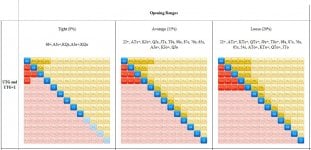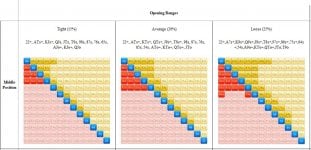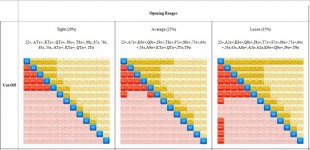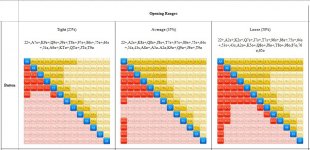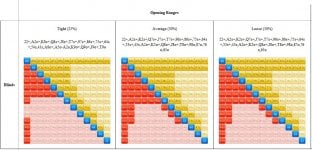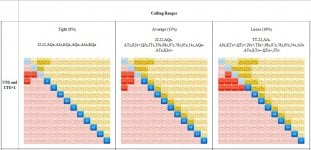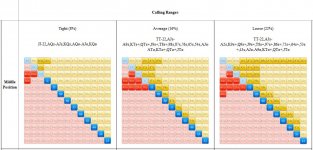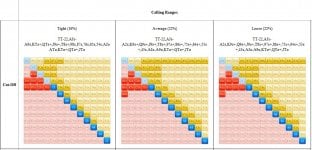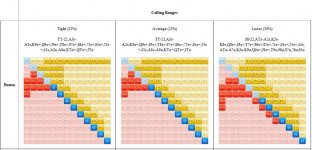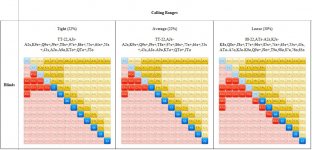S
sundizzel
Enthusiast
Silver Level
Pre-Flop Opening and Calling Range Assumptions
My intention with this post is to share the pre-flop opening range assumptions I have been operating on in MTTs and subsequently have been using to analyze specific spots in PioSolver's Range Explorer. My primary concern is that, if I'm using inappropriate range assumptions, then my +/- EV calculations for each spot are off, and it will be difficult, if not impossible, to play profitably in the long-term. I would appreciate any input you might have on:
- Whether the percentages of hands played in each position seems reasonable (e.g., a tight player only playing 9% of hands in Early Position).
- Whether the specific hands used to populate each percentage of hands played seems reasonable (i.e., the percentage seems right, but maybe you would think the shown range is including some hands that shouldn't be included and/or excluding some that shouldn't be excluded).
- Any other thoughts you might have on these range assumptions and relying on them during tournament play and subsequently during hand reviews to calculate expected value in each spot.
- "EP" is Early Position (UTG and UTG+1)
- "MP" is Middle Positions.
- "CO" is Cut-Off.
- "BTN" is Button.
- "BB" is both the Big and Small Blinds.
Hopefully this will be something that sparks some discussion players of all skill levels can learn from, but it may be particularly useful to beginners or anyone not considering their own and/or their opponents' ranges during play and study. Looking forward to any replies!
- Sundizzel
